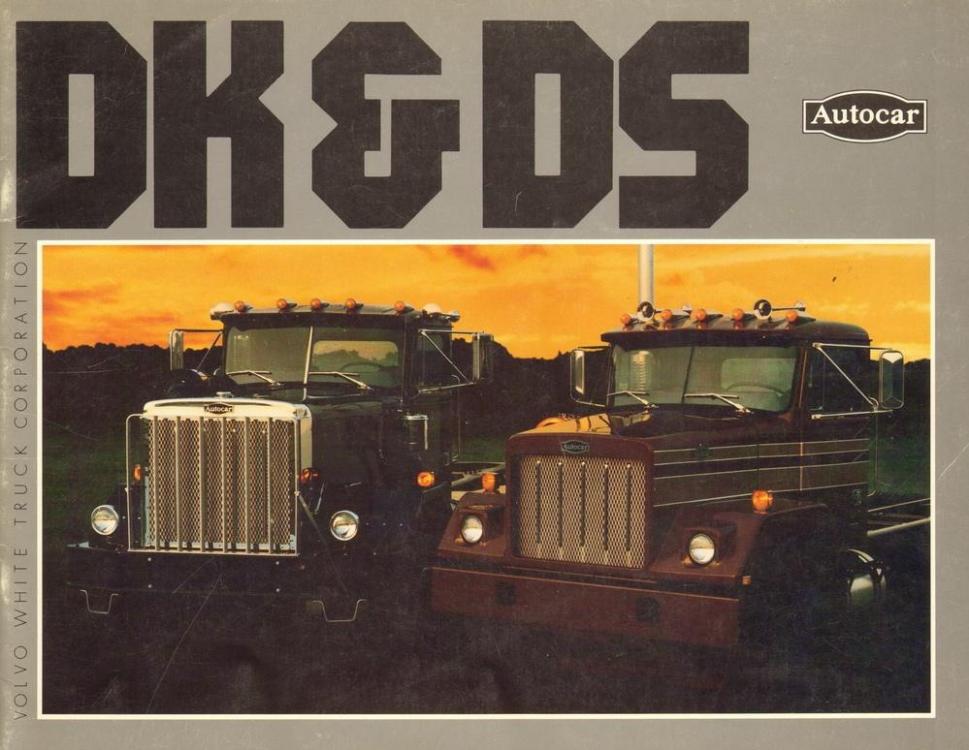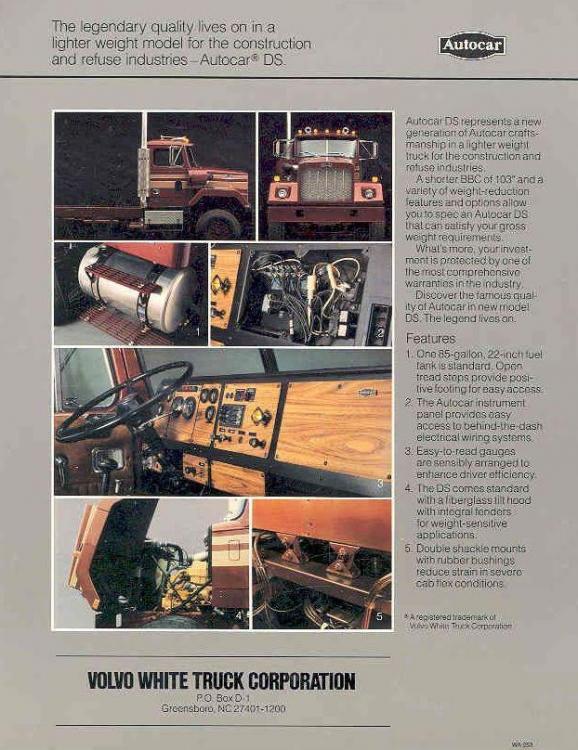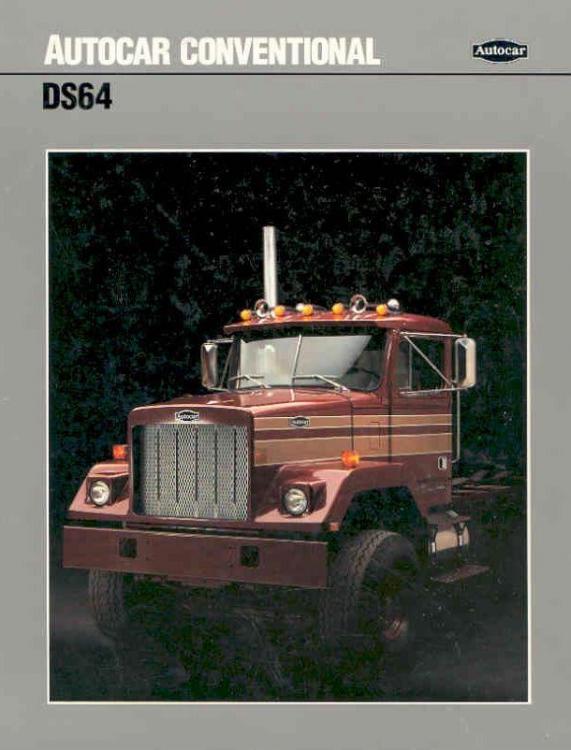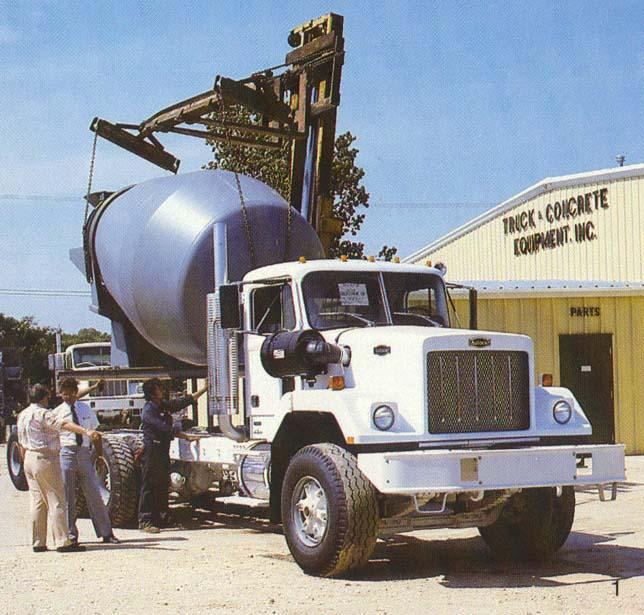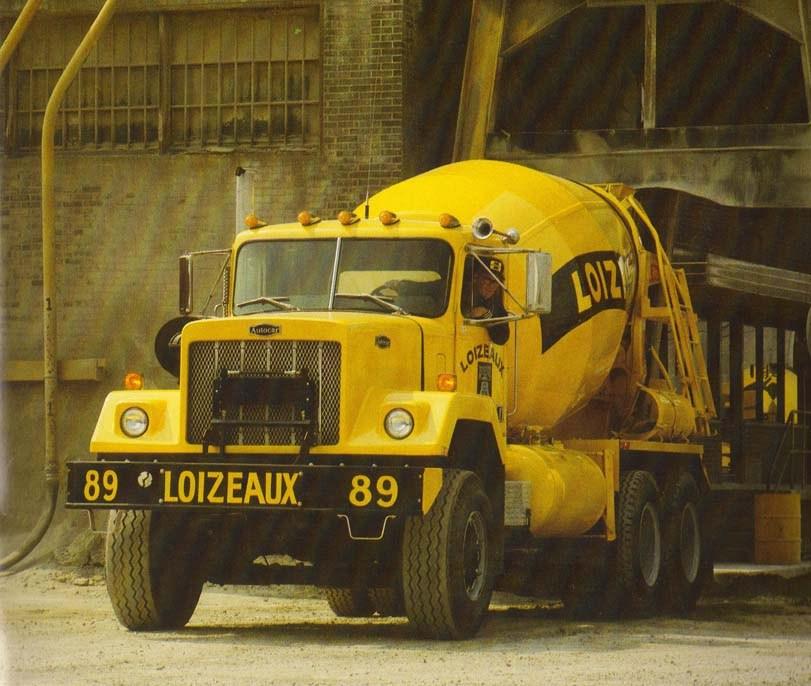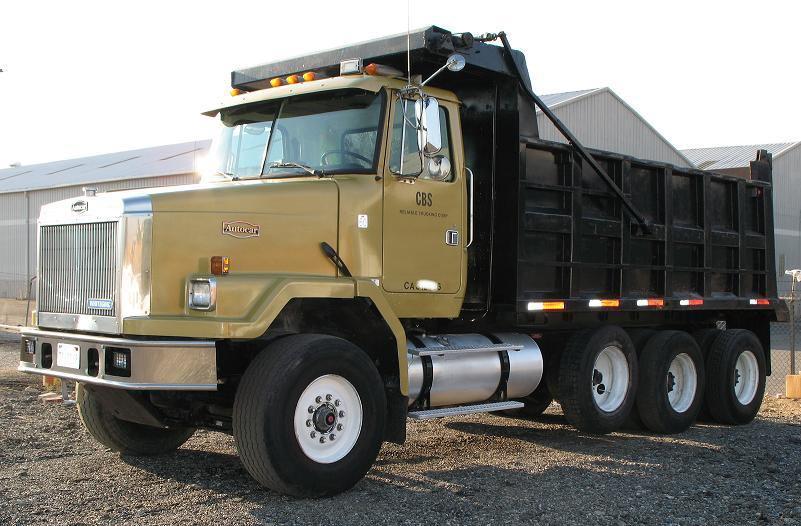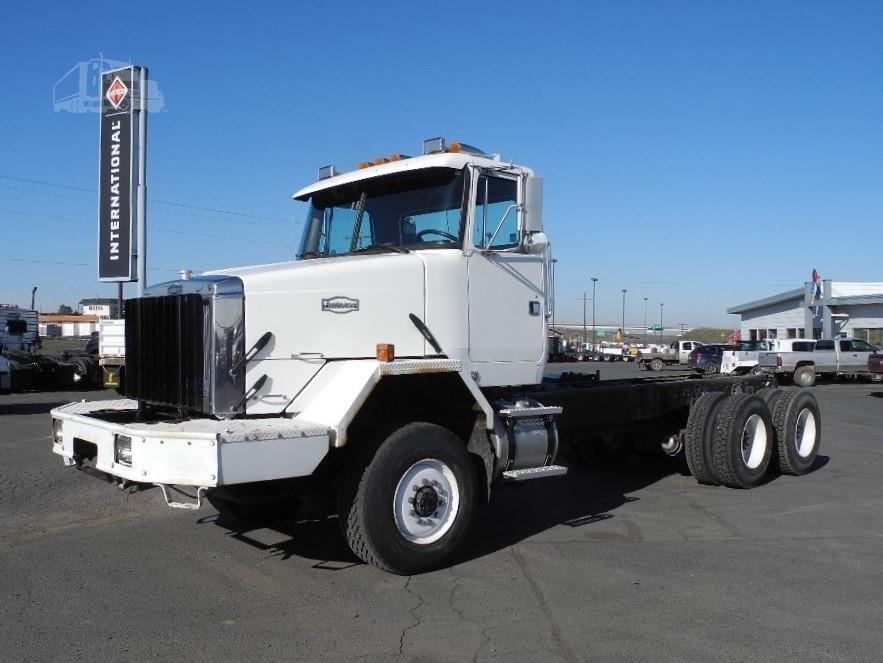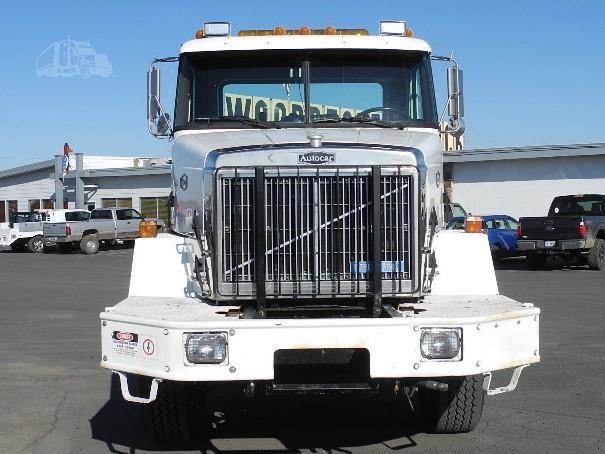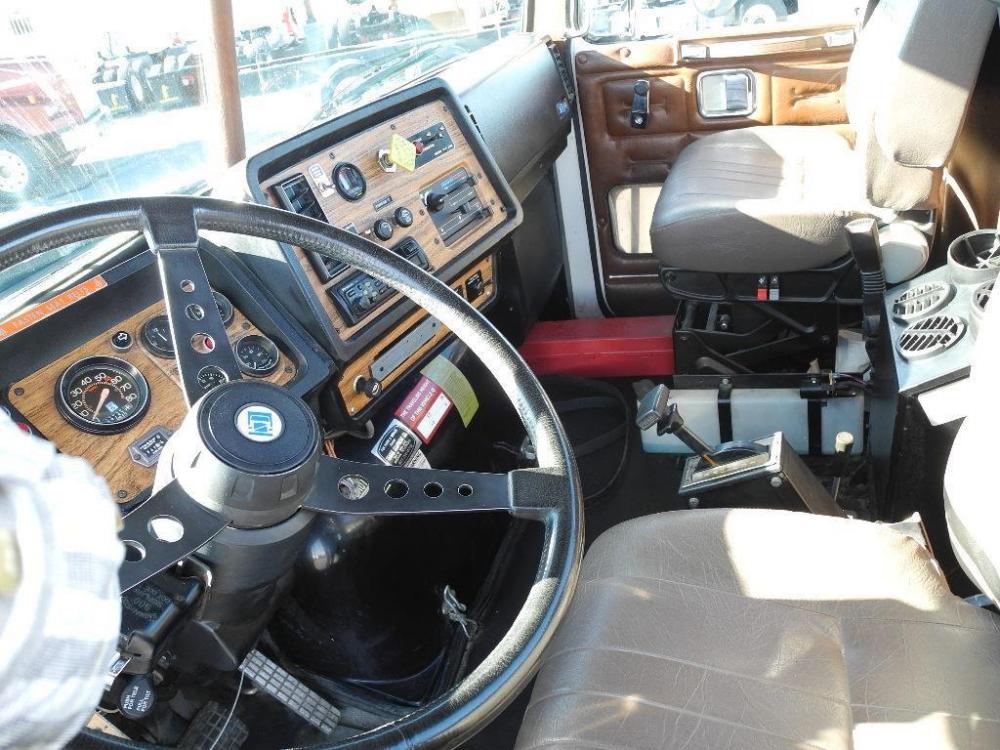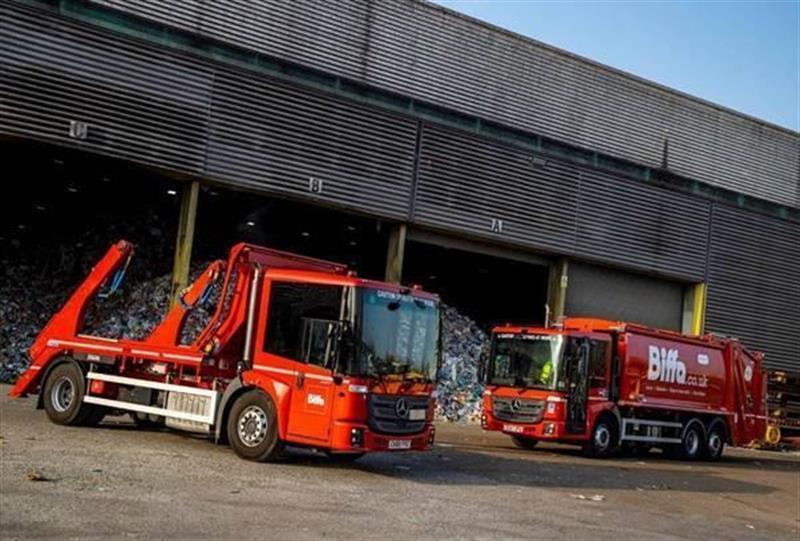
kscarbel2
Moderator-
Posts
18,935 -
Joined
-
Days Won
114
Content Type
Profiles
Forums
Gallery
Events
Blogs
BMT Wiki
Collections
Store
Everything posted by kscarbel2
-
-
I always liked the lightweight DS-64 with the fiberglass hood (bonnet), predecessor to the ACL-64 and new DC-64R.
-
From what we're told, it's a fact they are doing both.
-
Chevy expands V-8 engine availability on 2020 Silverado Michael Wayland, May 22, 2019 DETROIT — Chevrolet is significantly expanding the availability of its highest-output V-8 engine for the 2020 Silverado. The 6.2-liter gasoline engine — rated at 420 hp and 460 pound-feet of torque — will be optional on five of eight trim levels, up from two high-end 2019 models. The expanded availability will lower the entry-level price of a pickup with the engine from roughly $50,000 to $43,865. Pricing includes $1,595 destination. The V-8 engine, paired with a 10-speed transmission, will be available on the Custom Trail Boss, RST (equipped with four-wheel drive), LT Trail Boss, LTZ and High Country models. It will remain unavailable on Work Truck, Custom and LT trims. The added availability of the V-8 is part of the Silverado’s launch cadence and not a reaction to higher-than-expected market demand, according to a Chevrolet spokesman. The 5.3-liter V-8 engine remains “by far” the most popular engine for the pickup, he said. The lower price threshold for the engine is one of several packaging changes or updates announced Wednesday by Chevrolet for the 2020 Silverado. Other powertrain changes include expanded availability of the 10-speed transmission as well as a 2.7-liter turbo four-cylinder engine and eight-speed automatic transmission being available on Custom models. "In today's truck market, customers continually demand more features, more technology and more capability," said Tim Herrick, executive chief engineer of GM's redesigned full-size trucks, in a statement. "For 2020, we are delivering more in each of these areas." The Silverado, like its GMC Sierra sibling, also will add new trailering technology and adaptive cruise control for the 2020 model year. The trailering includes the addition of a camera system with 15 viewpoints that enables a "transparent trailer" view that was announced for the heavy-duty models of the pickups for the 2020 model year. The camera-based adaptive cruise control will be available on Silverado LT, LTZ and High Country. The 2020 model year also will be the first to offer a new 3.0-liter inline-six turbodiesel Duramax engine. The engine was expected to be available late in the 2019 model year, but GM on Tuesday said the EPA's emissions certification process is taking longer than anticipated, causing a "slight delay" in its availability.
-
Great way to create jobs and support the human race (sarcasm on my part).
-
Ford tests package-carrying robots for driverless delivery Bloomberg / May 21, 2019 It’s a headless robot in a driverless car. Ford Motor Co. is working on a way to resolve what self-driving researchers refer to as “the last 50-foot problem.” If an autonomous delivery vehicle arrives at your house, without any humans aboard, who’s going to carry the package, grocery bags or piping-hot pizza to your doorstep? A robot, of course, could be up to the task — with no tipping necessary. In Ford’s case, the solution is Digit, an android with two stork-like legs, arms capable of carrying a 40-pound load and a camera-encrusted torso topped by a puck-shaped laser-radar sensor. It could be the headless cousin of a battle droid from the much maligned Star Wars prequels. The business case for driverless delivery is even more compelling than robotaxis — and potentially easier to execute. For one thing, there’s no need to worry about the safety of human passengers. And the rise of online shopping has turned package delivery into a huge growth area. Just ask Amazon, which spent $27 billion on delivery costs last year. Remove the human driver from the equation, and delivery costs could plunge by 60 percent or more. The benefits could be in the billions. Ford would like to deploy Digit delivery robots as early as 2021, alongside the planned introduction of its autonomous vehicle fleets to ferry people and packages around the clock. “We’re going to have an AV fleet out there, and my goal is to get robots to be able to be there and ready at the same time,” said Craig Stephens, director of controls and automation in Ford's research and advanced engineering. How real humans will react to this delivery android is a key part of Ford’s research, which is just getting underway and will include real-world tests inside Ford factories, and on the sidewalks near its headquarters in Dearborn, Mich., and in Pittsburgh. “Digit looks actually pretty friendly to me,” Stephens said. The “inoffensive” appearance is “going to be a key thing for people to be able to trust a robot.” Startup robot firm Digit was created by Agility Robotics, a startup with fewer than 30 people based in Albany, Ore. Chief Technology Office Jonathan Hurst said he hasn't seen anyone react negatively when meeting Digit or a forbearer that lacked a torso and was simply a pair of piston-like legs attached to a motorized midsection. The robots have been allowed out on the town. “I have a lot of people ask us, ‘Could this be perceived as creepy?’” Hurst said. “There is a small subset of people who stay far back,” he said, “and whip out their smartphone and starting taking video.” While the design is likely to evolve, Hurst doesn't see a need to give Ford’s delivery robot a head. In fact, he wonders if that might freak people out more. “If it looks very close to an animal or a human but is not quite there, then immediately people are revolted by it,” Hurst said. “And we didn't physically need a head up there for our current perception needs.” Other robot tests Others are tinkering with delivery robots, not all of which are humanoid. Anybotics and German auto-parts giant Continental demonstrated a robotic delivery dog concept at the Consumer Electronics Show this year. Segway has shown a rolling delivery device that looks like a mobile office copier, and FedEx is testing a boxy rolling bot that can climb stairs and carry up to 100 pounds. Starship Robots, which look like squat storm troopers with six wheels, are deployed in several cities around the world, according to the startup based in San Francisco and Estonia. And Postmates, which is researching autonomous grocery-getting with Ford, has a cute delivery robot known as Serve with googly eyes like Pixar's Wall-E, along with four oversize wheels. Ford is worried that wheeled robot couriers would be blocked by front-porch steps found outside most homes in America. Digit, by comparison, can climb steps and raise its arms to catch itself in a fall. Its tiny feet, soled in corrugated rubber, can traverse concrete, grass, wood, and gravel. Ford’s decision to go with two legs, instead of wheels, came with help from researchers at the University of Michigan. “Our world is designed for bipedals — us,” Stephens said. “So there's an inherent attractiveness to a bipedal robot.” Another advantage is Digit’s lightweight design. Rather than outfit it with a full array of sensors and processors, which would push its bulk past 100 pounds, Digit gets most of its computing power from Ford’s self-driving vehicle. The same sensors that allow an autonomous car to navigate will be used to scan the path to the door and beam the route to the robot. Transformers comparison Once Digit has left the package on the porch or handed it to the recipient, it walks back to the delivery van, folds itself into a compact square, and slides into a drawer that serves as a docking station. The process looks like something out of a Transformers movie. The suburban-porch scenario — “up the garden path to the front door,” as Stephens puts it — won’t be the only use case. Ford and Agility plan to test urban scenarios that involve gaining access to apartment buildings without help of a doorman. At first, however, there will be a role for human helpers. “We're not going to be deploying them by the thousands and replacing all people who do the job right away,” Hurst said. For Ford, which specializes in commercial vehicles, driverless delivery has huge potential. The automaker has pegged the potential value of the market for robot ride-hailing and driverless delivery at $332 billion. “The business opportunity is large,” Stephens said. “Robots are going to be necessary.” .
-
Scania to invest $344 million in Brazil after Ford exit
kscarbel2 replied to kscarbel2's topic in Trucking News
I think Ford made a huge mistake.....their decision is a huge loss of face in South America's key market of Brazil. Yes, Brazil's economy has been skidding bottom with no end in sight. As a result, all the truckmakers are hurting. Even the Chinese truckmakers largely canceled their big plans to build there. Ford's office furniture guru Hackett decided to ax commercial truck production in Brazil to cut cost (while the global truck unit Ford International is taking off nicely). https://www.bigmacktrucks.com/topic/47464-ford-market-news/?page=24&tab=comments#comment-416185 This isn't the first time Brazil's economy hit bottom and caused pain for the truckmakers. Back in the 1990s, things were so bad that Ford and Volkswagen formed a joint venture, Autolatina*, so as to consolidate production and reduce costs.....and ensure their survival. * From 1990 to 1995, Volkswagen trucks and buses were built at the Volkswagen-Ford AutoLatina* joint venture utilizing Ford truck components. Challenging economic conditions during the 1980s forced Volkswagen and Ford’s business units in both Brazil and Argentina to join forces and form a money-saving joint venture called AutoLatina in 1987 which lasted to 1995. VW and Ford trucks were produced together in Ford’s Ipiranga truck plant from 1990 to 1995. -
So maybe more appropriate people in U.S. history like Thomas Jefferson, Franklin Delano Roosevelt and Dwight Eisenhower still have a chance.
-
Harriet Tubman $20 bill won’t be released next year, Mnuchin says Greg Robb, MarketWatch / May 22, 2019 The new $20 bill featuring a portrait of Harriet Tubman, the abolitionist who guided many slaves to freedom, won’t be unveiled in 2020 as has previously been scheduled, Treasury Secretary Steven Mnuchin said Wednesday. Mnuchin, who has generally avoided the issue since taking office, was pressed for an update on the status of the new design during a House Financial Services Committee hearing. Under questioning, Mnuchin said the new $20 bill will now not come out until 2028. The Tubman design was announced by the Obama administration in 2016 after a public poll that drew lots of attention. President Donald Trump has never seemed at ease with the Tubman design. He called it an example of political correctness and suggested the image should be on a $2 bill instead. Mnuchin denied that he was scrapping the Tubman design entirely. Rather, he said he was focused solely on the security features of the currency revamp and that what the currency would look like would be left for a successor. “It is not a decision that is likely to come until way past my term,” Mnuchin said.
-
-
-
GM postpones launch of new 3.0-liter Duramax diesel to 2020 MY Michael Wayland, Automotive News / May 21, 2019 General Motors is postponing the launch of a new inline-six turbodiesel engine in the Chevrolet Silverado 1500 and GMC Sierra 1500 until the 2020 model year. The EPA's emissions certification process for the engine is taking longer than anticipated, creating a "slight delay," according to a memo GM sent to dealers Tuesday. The full-size diesel pickups were expected to go on sale for the 2019 model year in early 2019, months after gasoline versions started arriving at dealerships last fall. GM said 2020 diesel pickup production will begin "soon" but the delay means dealer orders for the models will be canceled and must be resubmitted. Dealers and customers impacted by the cancellation will be offered a replacement 2020 vehicle. Notification and timing of the replacement orders will be provided later. A company spokesman said dealer orders for the 2020 diesel models will open "soon." He refused to say how many orders were placed for the 2019 model year. The U.S. government has taken a stricter stance on emissions certification — particularly diesel engines — since Volkswagen Group's sweeping emissions violations emerged in September 2015. Other automakers, including Fiat Chrysler Automobiles and BMW Group, have also been forced to delay launches because of the prolonged certification process. The 3.0-liter Duramax engine is GM's first turbodiesel in a 1500 series GM pickup since 1997. In March, GM said the engine — paired with a 10-speed automatic transmission — would achieve segment-leading power of 277 hp and 460 pound-feet of torque. GM has not released towing capacity, payload and fuel economy ratings for the Duramax diesel model, which will be priced starting at $2,495 over a 5.3-liter V-8 model and $3,890 over a 2.7-liter turbo model. The new diesel engine is being produced at a GM powertrain plant in Flint, Mich. According to the memo, the Silverado, like its Sierra sibling, will receive updates such as adaptive cruise control and expanded availability of the 10-speed transmission for the 2020 model year.
-
Reuters / May 21, 2019 Volkswagen AG truck brand Scania said on Tuesday it will invest 1.4 billion reais (US$344.14 million) to modernize its Brazilian factory in Sao Bernardo do Campo, an industrial city near Sao Paulo. The investment in the historic center of Brazil’s auto industry follows Ford Motor Co’s decision to exit the heavy truck business in South America and shut down its plant in the same city, which could benefit the remaining players in the sector. During the first four months of 2019, sales of Scania heavy trucks increased 31% compared to the same period a year ago, according to data compiled by local automakers association Anfavea. The investment comes at a time when the state of Sao Paulo, which long dominated the Brazilian auto industry, has seen auto companies set up factories elsewhere, lured by tax incentives. Earlier this year, General Motors threatened big cuts in its Sao Paulo factories. That prompted state governor Joao Doria to negotiate aggressively, ending in the launch of a new incentive package for auto makers in the state. GM then decided to invest $2.7 billion to take advantage of the tax program. The new Scania investment will start in 2021 and end in 2024, following its 2016 to 2020 investments, which total 2.6 billion reais, the company said in a joint statement with the Sao Paulo state government. Scania’s latest financial commitment is aimed at overhauling its assembly line, as well as introducing a new generation of trucks in Latin America.
-
Transport Engineer / May 13, 2019 Waste management and recycling business Biffa has taken delivery of 43 Mercedes-Benz Econic trucks, adding to the 51 already acquired in 2017/18. Supplied by dealer Euro Commercials, 38 of the vehicles are 6x2 Econic 2630L variants with rear-steer axles and Dennis Eagle compactor bodies. Of the remainder, three are 18-tonne Econic 1827L skiploaders and two are 32-tonne 3235L ENA hookloaders, with bodywork by Boughton Engineering. These are Biffa’s first Econic-based skipoaders and hookloaders, and they are on trial in London, where the Econic holds a five-star rating under the Direct Vision standard thanks to its low seating position, panoramic windscreen and fully glazed side door. All new additions are equipped with 7.7-litre, six-cylinder engines, with the RCVs producing 295bhp, while the skiploaders have 269bhp versions and the hookloaders 350bhp. The RCVs have fully automatic six-speed Allison gearboxes ideal for stop-start collection; the skiploaders and hookloaders have 12-speed Mercedes PowerShift 3 transmissions. Colin Bagnall, Biffa fleet project engineer, says: “The Econic is our preferred low-entry RCV chassis… We used to buy 6x4 variants, however to reflect the fact that a much higher proportion of the trade waste we collect is now recycled at our own transfer facilities, rather than being sent to landfill, we switched about three years ago from double-drive to 6x2 rear-steer chassis.” Biffa undertakes the majority of vehicle inspections and maintenance in its own workshops. “Mercedes-Benz Trucks has a strong dealer network, though, and we also rely on its members to undertake warranty work and, from time to time, other assignments,” adds Bagnall. .
-
-
Commercial Motor / May 20, 2019 .
-
Peterbilt Motors Co. Press Release / May 17, 2019 Building upon Peterbilt's tradition of Class, the Blackout Exterior Package will have everyone doing a double take of your Model 579 UltraLoft. The Blackout Exterior Package includes an exclusive black effect exterior paint, Dura-Black aluminum wheels and a black finish crown. .
-
Functional and cheap, but low build quality and a droopy face only a mother could love.
-
Freightliner Trucks Press Release / May 21, 2019 .
-
Mercedes-Benz's Econic refuse truck comes to North America
kscarbel2 replied to kscarbel2's topic in Trucking News
Well, it only took the Germans more than a year (13 months) from the Econic's official introduction to "finally" get around to trying to sell this cheapened/decontented version for North America (In Europe it's is a solid truck, second only to Dennis Eagle). -
Mercedes-Benz's Econic refuse truck comes to North America
kscarbel2 replied to kscarbel2's topic in Trucking News
. . . -
Cummins Press Release / May 17, 2019 The new GILLIG Battery Electric Bus, powered by Cummins, is now available! If you’re attending APTA (American Public Transportation Association) in Louisville, find out more and see the electric bus firsthand. Press event with GILLIG and Cummins leaders at 11:30 AM on Monday, May 20. #Cummins #GILLIG .
-
You're right Paul, most don't.
BigMackTrucks.com
BigMackTrucks.com is a support forum for antique, classic and modern Mack Trucks! The forum is owned and maintained by Watt's Truck Center, Inc. an independent, full service Mack dealer. The forums are not affiliated with Mack Trucks, Inc.
Our Vendors and Advertisers
Thank you for your support!


